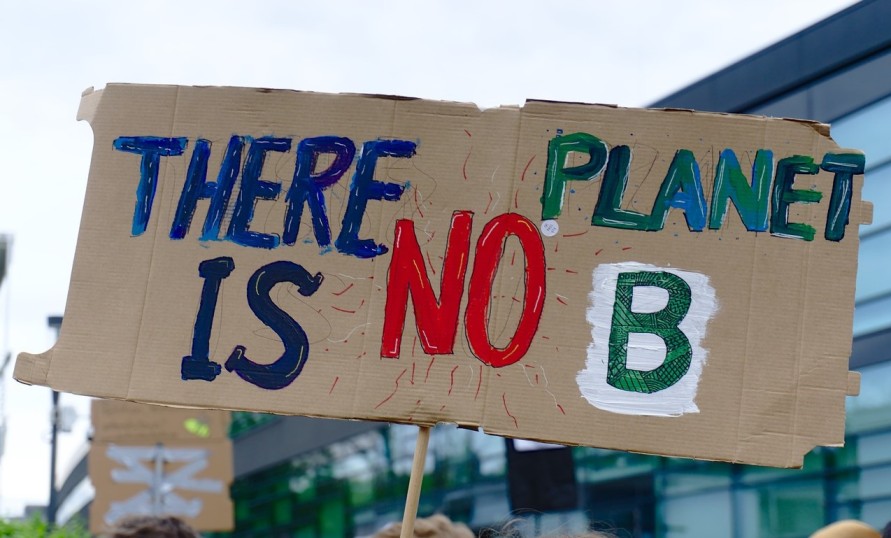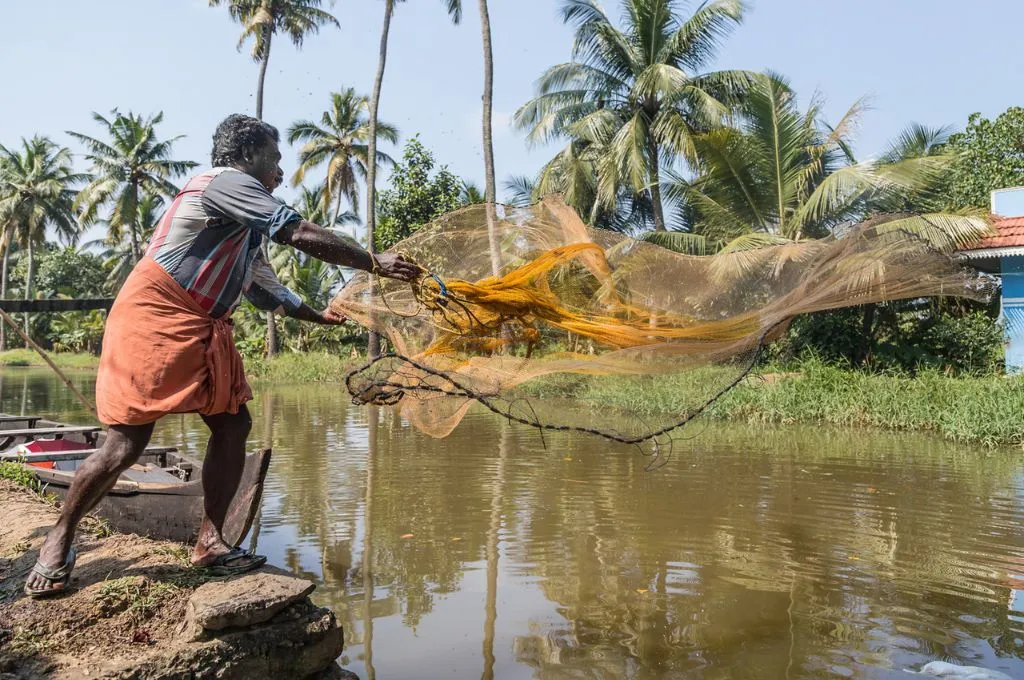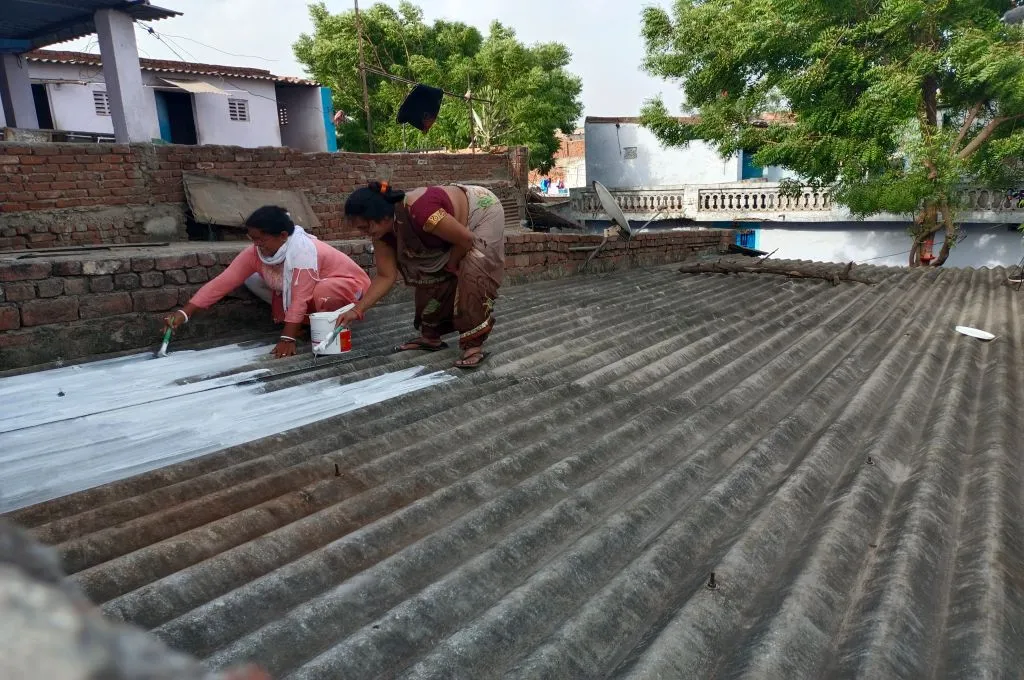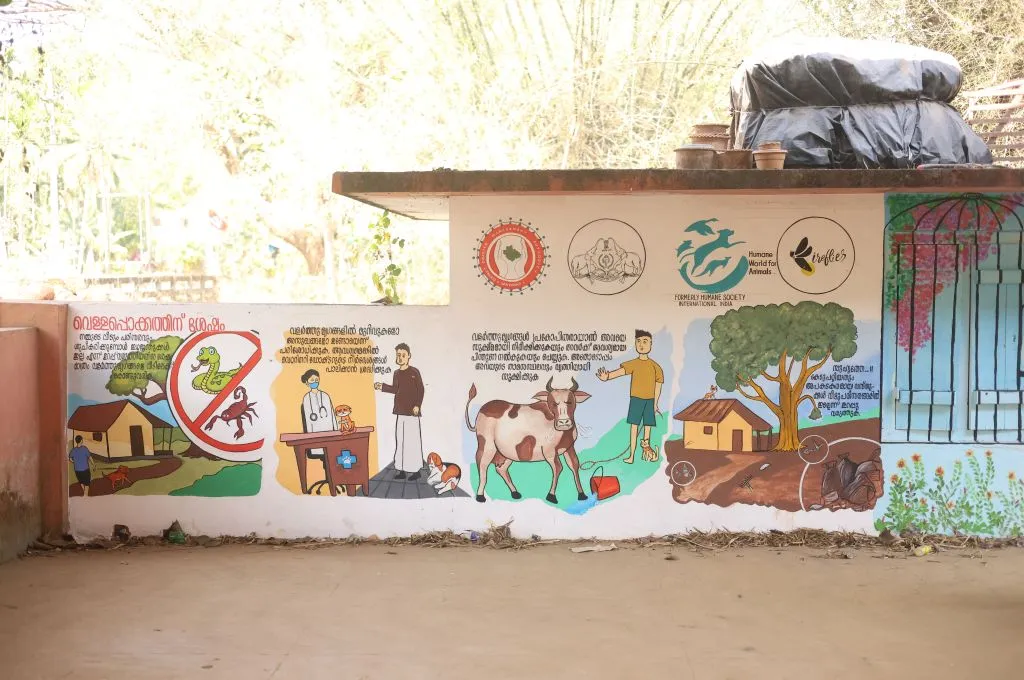Edited transcript of the episode:
00.36
Rachita: When it comes to funding climate action in India, how does domestic, private capital stack up? While companies are making bold announcements and changing how they operate to mitigate their climate impact, what’s happening with corporate philanthropy? Even since the Companies Act required corporations to set aside 2 percent of their net profits for corporate social responsibility or CSR activities, the quantum of giving has been steadily increasing every year. But how much of that is being directed towards combating climate change? And what about individual and private philanthropy? If it’s merely a drop in the ocean given the size of investments India needs to fight the climate crisis, then what’s the role it should play?
I had a chance to catch up with two of my good friends, Shloka Nath and Gayatri Divecha, and they had lots to say about the potential of both corporate giving and private philanthropy to catalyse climate action.
Shloka currently leads the policy and advocacy and the sustainability and special projects portfolios at Tata Trusts, one of India’s leading philanthropic foundations. She is also the acting director of India Climate Collaborative, an India-led platform founded in 2018 by a group of philanthropies interested in continuing to accelerate India’s development while also exceeding its climate goals. Prior to this, Shloka co-founded and was the managing partner of Sankhya Women Impact Funds, a gender lens fund with a focus on sustainability.
Gayatri heads corporate social responsibility (CSR) for Godrej Industries and Associate Companies. She drives the group’s sustainability agenda that works towards skilling and entrepreneurship, prevention of vector-borne diseases, rural livelihoods, and access to entitlements. She has 15 years of experience working in the development sector across academia and corporate philanthropy and at nonprofit organisations. Prior to Godrej, she was part of the corporate sustainability team at HSBC India, where she played a key role in driving the bank’s community investment programmes.
2.44
Rachita: Shloka, I’m going to start with you. What do you see as the role for philanthropy in fighting the climate crisis?
Shloka: So, I think there’s a tremendous role for philanthropy to play in fighting climate change, or spurring on climate action, there is a need for philanthropic capital to really sort of come into this space, because there is a response to climate action that we have to build out specifically for the Global South.
I think one that really has an equity focus lens—it means that we need to find and amplify solutions that don’t necessarily make a trade-off between climate and development, but actually help countries choose a sustainable development pathway.
And when we talk about climate, and I say this very often, we’re actually not really talking about climate change. We’re actually talking about the loss of income. We’re talking about the destabilisation of livelihoods. We’re talking about the destruction of property and communities and deeply overarching issues of social justice.
I think that’s really where you find philanthropic capital can accomplish things that no other type of capital can, right? It’s flexible. It’s inherently compassionate; its mission is to look out for vulnerable communities and populations. And so, in that way, I think it is…it has limitless potential when it comes to sort of the field of climate action and what it can really make possible.
4.03
Rachita: Thanks, Shloka. And can you give us a sense of where domestic giving is today, particularly in relation to fighting the climate crisis?
Shloka: So, in all honesty, domestic giving, while it’s definitely increased, it’s not where it needs to be. I do want to say that, you know, we are beginning to see a marked shift in the ecosystem, right? There are ambitious commitments that the Indian government is making; corporates as well have been declaring net-zero targets. We’ve seen several states across the country actually pick up climate change as an area of focus.
So I think these shifts, coupled with a move by civil society organisations to be more climate aware and climate ready, have actually led to renewed interest from Indian philanthropy. So contributions here from philanthropy actually doubled between 2018 and 2020.
And domestic philanthropists in India have traditionally focused on very adaptation-adjacent sectors, you know, areas such as water, agriculture. And I think that’s really important, because international funding that’s coming to India right now is really focused around the mitigation space. So we do see a natural connection between domestic philanthropy and adaptation, which is really building resilience or dealing with the impacts of climate change as they currently exist.
But it’s also critical to help domestic donors better understand mitigation. So how do we continue to remove carbon from the atmosphere? How do we reduce our emissions? How do we ensure that we don’t create further catastrophic impacts from climate change in the future? And I think you know, particularly here in India, as the laws that govern foreign philanthropic funding, you know, are made more stringent, it is critical for domestic donors to continue to invest more in climate.
5.45
Rachita: Thanks, I want to come back to sort of how we can bridge the gap between ambition for climate solutions and climate action. But I want to pull you in, Gayatri, and I want to talk a little bit about CSR. Right, so foreign funding to nonprofits in India has been declining steadily, and particularly constraints placed on nonprofits when it comes to receiving grants from overseas funders. But at the same time, we’ve seen CSR money growing steadily year on year, and it’s going to continue to do so. So while this is happening, we’re having Indian companies that are actually adapting their business as usual to incorporate climate considerations, whether it’s in their supply chains or otherwise. But there’s been a lot less action on the CSR front. And I wanted to get your take on why that is the case and what the constraints are here.
Gayatri: I think, with CSR, it’s a different type of capital to what philanthropy is. We tend to bucket it in the same sort of category but it’s really not. It’s heavily regulated. There are a number of constraints that CSR functions face; there are prescribed areas in which to invest. And then each company’s priorities are different. There’s also a very big push for investing in local areas where the company is present. And depending on where one is located, the development needs can be a very long list.
The question of how to prioritise is a very pertinent one for CSR. Sure there’s the [fact that] overall funding is going up in CSR year on year, which is a great thing. And we obviously do hope that continues to be the case. But I think one needs to look at it more from the lens of each company, right? Everyone has limited resources. We are expected to utilise our budgets fully within a year. And that means our partners do have to utilise our budgets. It’s not a question of simply saying, let’s go plant a forest. That’s not how it works. And often these things tend to do more harm than good. It’s an extremely scientific process; one has to really consider what one is planting where. One can just as easily go about destroying an ecosystem of all the biodiversity of a particular area. But, you know, done the right way, in our experience at Godrej, [it] has been extremely successful.
There are lots of examples of global players that do not do much with CSR and climate change.
You know, my personal view is that companies that are not doing their bit with their business as usual to mitigate their impact on the environment…CSR activities, focusing on plantation or whatever, seem to me to be a bit of a greenwash, right? We are absolutely part of the solution as companies; there are lots of examples of global players that do not do much with CSR and climate change, because it is…it eventually leads to offsets for us. So they don’t do as much until the teams have proven that they can reduce their own emissions and their own environmental footprint.
8.41
Rachita: So, Shloka, on this learning curve, right, of understanding how to do it scientifically and effectively, where do you think Indian philanthropy is?
Shloka: I think we have a long way to go. Now, within philanthropy, climate is not a sector by itself. It’s cross-cutting, right? It influences all sorts of developmental outcomes. It’s usually influenced by development interventions as well. So, you can’t really separate climate change from health or gender or poverty. It’s not actually disparate from, you know, infrastructure or energy access or economic development.
So I think while, you know, there’s a growing recognition within philanthropy that climate solutions are developmental choices, I think what it’s allowing funders to do is actually imagine a new paradigm, right? Like, they can integrate climate action into their work, no matter what they’re funding.
Funders actually don’t often have access to the breadth of climate solutions.
But I think one thing that we have to acknowledge is that there are many entry barriers, right, for both funders as well as nonprofits. And I think through our work, just landscaping the climate philanthropic ecosystem here in India, what we realised is that funders actually don’t often have access to the breadth of climate solutions. Another thing that I really want to be honest about is that the climate sector is full of jargon; it can often lock folks out of the discussion. But, obviously, it takes more than language to make funding climate more inclusive. And I think we recognise that very deeply. At the same time CSR is, in India, you know, there is a tremendous sort of reputational risk in funding the nonprofit space. And they do need help on due diligence there; there is a need for greater transparency from nonprofits, greater disclosure requirements that don’t exist right now.
And I think that’s also caused a lot of hesitancy around funding nonprofits in the way that they need to [be supported], specifically when it comes to climate. These entry barriers exist regardless within sort of the nonprofit ecosystem, and then you multiply it by 100. In terms of just the complexities, there’s the science that Gayatri mentioned, there’s also the fact that just in terms of gestation periods, climate projects do not provide immediate outputs, they are longer term goals, you have to shift to looking at it from less of a sort of project-by-project approach, or CSR. Instead, move to a mindset that really looks at climate from a longer term programmatic approach, where you support a series of interventions and investments over a period of three to four years within specific sectors or thematic areas. So there’s a lot that needs to kind of shift in order to be able to make those viable investments within climate. As I said, I do think that there is a general shift that’s taking place within the wider philanthropic ecosystem around climate. But, obviously, we need to do more work around this.
11.28
Rachita: Thanks for articulating the complexity of that. So, well, I fully hear you on the need for a conducive environment, right? You need that in order for…for some of this to take shape. But in the absence of that, or as that is getting developed, what can funders do, right? Because gone are the days when we can sit on our hands and say, we’re just going to wait for things to happen. And you’re saying the time is ripe right now, and that there is a great deal of ambition and a great deal of interest in supporting climate solutions. So are there steps, and it doesn’t actually have to be only funders, right? It could be industry bodies or organisations like yours that can help either move policy along to get it to a place that makes it easier for corporate CSR…you know…philanthropy to support some of these issues. But then also, for funders, are there baby steps that can be taken while we wait it out?
Shloka: Yeah, I mean, not just baby steps, I would say giant steps. I really cannot understate how important philanthropic capital is in this whole challenge around climate. Philanthropic capital is a much smaller pool of money. Let’s acknowledge that, you know, compared to private or public capital, but it is so powerful because it is flexible enough to be spent on a variety of things, you know, whether it’s road maps and research to on-the-ground implementation, it’s not regulated by as many constraints as public capital, it doesn’t require a return on investment, unlike private capital. And, as I mentioned earlier, it’s inherently compassionate, right? It prioritises the well-being of communities of nature.
It’s very hard to bring domestic funding towards mitigation or emissions reduction.
So philanthropic funding can actually act as a conduit to enable other sources of finance to enter the climate sector. And that’s massive, because one of the biggest gaps in, you know, addressing the climate change challenge, not just in India but globally, is a lack of finance, right? Like, there are just so many systemic barriers for funding, more and more funding flowing towards climate solutions and climate action. And I’ve mentioned, of course, the fact that here in India, you know, we’re not focused yet on enough high-impact projects, you know, domestic donors are still focusing on legacy sectors; it’s very hard to bring domestic funding towards mitigation or emissions reduction.
I think, also rather to just bring it to light, what is the scope of philanthropy, in terms of what it can actually achieve? Let me just use the example of technology. So what we’ve realised through a lot of insights from our partners is that actually there are solutions that can enable scale in the climate sector, and we can do that by leveraging technology. So to give you one very quick and small example, we’ve been supporting a partner of ours, the Council on Energy, Environment and Water, or CEEW, they’re a very well-known premier, you know, Indian climate policy think tank based in Delhi, and they’ve been developing a comprehensive, first-of-its-kind climate risk atlas, or CRA, for India.
And essentially the CRA is a tool that will help us better predict climate risks and create the right risk management strategies. So this is important because you’re…you know…the Arabian Sea is warming really fast, we’re seeing more cyclones on the western coast of India like Nisarga in 2020, you had Taukate last year in 2021. But on the other hand, you have the Bay of Bengal, which has had historically higher sea temperatures. So cyclones, of course, are much more common in states like Odisha. And West Bengal, they’ve actually developed a lot of adaptations to cyclones, whether it’s building storm shelters, early warning systems; it actually really helps them reduce the loss of lives, given these very destructive storms.
So what we’ve realised and what you can see is having the right kind of data about climate risks is really important in building resilience for vulnerable communities across this country.
So I think, again, just to sort of give you a very small example of how data and technology can enable us to scale up that impact across geographies, and sectors, all funded by philanthropy, domestic philanthropy in this country, and in doing so you are capacitating state governments that may not have the wherewithal to do the groundwork themselves.
16.23
Rachita: Gayatri, I’m going to bring you in here and ask you a very similar question. What are steps that CSR would be willing to take? And I think Shloka mentioned some examples of supporting with state capacity within governments or supporting data technology research—are these areas where you think that there will be appetite from CSR?
Gayatri: From where I see it, I think there’d be less appetite from CSR on things like research. But I think what is much easier for CSR to do is implement in partnership with nonprofits. As Shloka was saying, this is really where CSR and philanthropy can also come together in a meaningful manner. But philanthropy can fund, CSR might not be able to. And, you know, really looking at how can we play a catalytic role even in implementation by getting local authorities and government which has far more resources than philanthropy and CSR put together? How do we get them to invest in places that they need to and take the kinds of actions they need?
There have been millions of parallels in India with, you know, livelihoods with sanitation, with diseases like malaria, also polio, HIV, where philanthropy, CSR, you know, government action has all come together collaboratively, and really solved for an issue over a 10–15 year time frame. And I think probably polio and HIV are the best examples of that. So why can’t we take a similar approach with climate action and, you know, areas related to climate action, such as water and biodiversity?
I think the other piece for CSR to really consider is that we sometimes tend to act in silos, we will do our own thing, we will say, this village is next to my plant or factory or whatever, and we will do our own thing and somebody else is doing the same thing at the same place. And we’re always aware of it, right?
I think, you know, industry associations here have a big role to play. And, recently, I was in Barot where the district management has done a phenomenal job of actually getting a nonprofit to baseline the entire district, and baseline everything from water to green cover to livelihoods, public safety, you know, things like street lights. And I thought that was phenomenal because they put this on a digital platform, as a result of which companies located in that industrial belt have the ability to draw on baseline data, make sharp and specific choices about where they’re going to invest; they can see that the…you know…that the interventions are not being replicated, or they can cofund with others.
I was absolutely flabbergasted when I saw that FICCI and Trilegal put out this number of some USD 20 billion in annual investments that are required for India to meet its climate action goals, the ones that were recently announced at the latest COP. And, you know, sometimes you wonder how is that ever going to happen, right? Is CSR and philanthropy then just a drop in the ocean? Right? But I think it can be a powerful drop, if it’s bringing other drops together. If somehow we can, you know, with our limited resources, we can influence others. And I think the examples that Shloka gave of the climate atlas is perfect. One day, if that is what we can do, then I don’t see this, you know, this USD 20 billion being a pipe dream.
19.47
Rachita: And, I mean, also investment is one aspect of what needs to happen, right? It’s a very necessary aspect. But there’s so much other stuff that also needs to happen, like both of you have been saying in the conversation today. So I just wanted to ask you one last question about whether you see a role beyond funding for CSR when it comes to supporting climate action. And then, Shloka, the same question for you.
Gayatri: Absolutely. I think, again, I say this from a very Godrej-centric perspective, right, we’ve been investing in climate action as businesses for the past 12 or 13 years now. And, you know, I think that there’s a lot that we’ve learned both around what are the right solutions as well as where have we failed, and what are the challenges, right?
There’s a lot beyond funds that companies can provide, whether it’s the frameworks we adopt to do our own internal climate risk assessments, to do our materiality assessments.
And I think that there’s a lot beyond funds that companies can provide, whether it’s the frameworks we adopt to do our own internal climate risk assessments, to do our materiality assessments. I mean, these are things that ideally should be done at a much larger scale than just a company, right, cities, districts, blocks, you know, states, we have a specific approach to trying to measure these risks, right, we use internal carbon prices as well when we consider investments in new technologies.
So that we’re comparing things apples to apples when it comes to investing in emissions reductions. So we…you know…we do add a carbon price by default, there is a plastics price now in India with the EPR regulations. We’re looking to build a water price, though that’s much more complicated. These are the kinds of exercises that you know companies have done for their own businesses, but certainly not the only ones. I think all of the large, leading Indian companies have been on a similar journey. But I think there’s a lot to learn from that for other institutions and organisations that are looking to do more.
Shloka: I think for us at the ICC…also, it’s just leadership, you know, international negotiations often feel like a stalemate, right? And it’s very hard to keep a sense of hope around the fact that developed nations will come through on the funding commitments that they’ve made. And I think we can see that the current approach has not been very successful. While it’s very tempting to focus on what should be done in a global framework, I think it’s much more productive to actually engage with what we can do here locally to balance those systems of power.
And I think one of the things that we’ve realised that is critical within the climate conversation is to capacitate voices in the Global South, right, to be able to represent our perspective in these global forums. And international philanthropies are great supporters of global climate action, we often see them at platforms like COP, you know, they make a lot of commitments and they pledge funding towards transitions, towards nature, towards communities.
We need to have strong voices at the table who can advocate for India’s needs to set clear priorities for India’s transition.
But domestic philanthropists, on the other hand, are very rarely present. And we’ve started to now see Indian businessmen actually engage with these convenings. But to be able to balance that power, we need to have strong voices at the table who can advocate for India’s needs to set clear priorities for India’s transition. And I think, quite frankly, based on these plans and priorities, really invite specific finance. So the way South Africa recently did for the coal transition at COP26, they were able to raise, I think, USD 8.5 billion, from the USA, from the EU, and from the UK for their transition around fossil fuels. I think the role CSR can play here is tremendous. It’s [The role is] not just, as I said, sort of around funding, but there really is one around this need to sort of highlight the story of the Global South—what is the India story? And I think it is one where, it speaks to collaborative action, it’s about coming together to paint a picture of climate action as something that actually improves people’s lives, right? It allows them to live better, to live healthier, to earn more, something that protects and restores ecosystems, that reimagines our relationship and our conflicts with nature. That’s the story we want to tell.
You know, Gayatri mentioned that CSR, of course, is more constrained than even private philanthropy. But I think what it does really well is it has this amazing, incredible network of grassroots organisations that it has really nurtured across this country. It is able to work on adaptation and building resilience in a way very few other sources of funding can. So how can you sort of bring all of that to the forefront? It’s a people-first take with development at its heart. And I think that’s a story CSR can lead that can really be a source of hope and collectivism across the Global South.
24.26
Rachita: Most conversations about climate that I am a part of leave me feeling overwhelmed and full of despair. This was such a welcome change, because for once, despite the fact that there is so much more for corporate and private philanthropy to do in this space, I am left feeling a strong sense of the potential for change.
Sometimes it can be easy to berate funders for not doing enough, but like both Shloka and Gayatri said, action follows intention when there’s clarity. And, today, a lack of clarity is just one of the many entry barriers to supporting work in this space.
This by no means lets funders off the hook—they need to educate themselves more on the science, and they need to step up their game now, but the good news is that they’re more ready than they’ve ever been. And there is a clear role for CSR and philanthropy when it comes to climate tech and data as well as building climate resilience, especially among some of India’s most vulnerable populations.
—
Read more
- Why philanthropy needs to include a climate lens
- Can CSR funding be the booster needed for combating climate change?
- India climate collaborative annual report 2022
- Role of Indian businesses in driving ambitious climate action
- It’s time for philanthropy to step up the fight against climate change
- The role of CSOs in tackling the climate crisis





